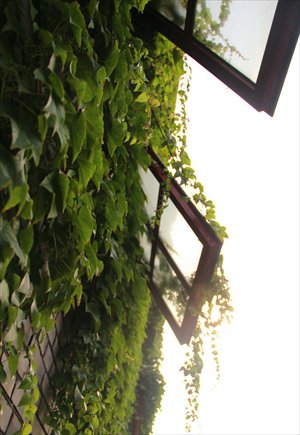A breath of fresh air
Among the scarier news stories to hit the headlines in recent months is the growing problem of air pollution in Chinese cities.
The term "PM 2.5" - meaning particulate matter with a diameter of less than 2.5 micrometers - has become a hot topic of late, mainly because of the appalling effects on human health that this innocent sounding measurement represents. The effects of such tiny airborne pollutants cover a variety of ills including respiratory diseases and cardiovascular conditions.
"Today the public, and the government environmental protection administration are showing great concern about the detection of PM 2.5 pollution outdoors, but are neglecting the level of PM 2.5 pollution that exists indoors, and this requires urgent and appropriate attention," said Wu Jixiang, a professor specializing in environmental engineering and the development of air purification techniques. Wu works at Shanghai Jiao Tong University and has developed a number of patents in his specialist field.

Safe measures
Wu believes that people spending most of their time at home should take some measures to improve their air quality. This is especially important in indoor spaces where children, pregnant women and people with allergies spend long periods of time. "Finding an effective way to purify indoor air containing PM 2.5 will go a long way to solving any problems," Wu told the Global Times.
Air purifying machines are usually the first thing that jump into people's minds when confronted with the problem of polluted air. And this explains the fact that stocks of such machines have been selling like hotcakes across the whole of China during the past few months.
"However, most of the air purifying devices currently available on the market don't meet the functional standard of purifying PM 2.5," said Wu. "Desperate consumers can be easily misled by certain brands' dishonest self-promotion. In reality, unique techniques need to be used in devices in order to purify different harmful particulates in the air."
The most common techniques, he says, include filtration and absorption. "The technique of using an electrostatic precipitator (which removes particles from the air via an induced electrostatic charge) for example, can work effectively to combat PM 2.5, but it produces other harmful byproducts which makes it unsuitable for using indoors," Wu told the Global Times. "The HEPA (high efficiency particulate air) technique, however, is an ideal solution to PM 2.5, and is also internationally recognized."
International standards
According to Wu, two overseas brands, IQ Air (Switzerland) and Blueair (Sweden) both meet the requirements of combating PM 2.5; that is, they are able to quickly reduce the content of PM 2.5 to under 10 micrograms per cubic meter, a standard of healthy air quality recognized by WHO (World Health Organization). Wu added that some domestic brands are also in the process of developing air purifiers to meet international standards.
"Compared to these international requirements, the monitoring of PM 2.5 data in China is not standardized, so it's necessary for people to be aware of air quality because it might be much worse than the officially released figures suggest," Lu Deyuan told the Global Times. Lu is a laboratory chief and researcher at Shanghai CPG Testing & Management, a company providing environmental testing services, including indoor air appraisal.
And Lu believes that on days with little outside air pollution, good living habits can play an important role in protecting indoor air from PM 2.5. Opening windows on hazy days, for example, is likely to worsen indoor air quality. On the contrary, in clear weather it is highly recommended to open the windows to ventilate the indoor air.
"And smoking is another big cause of PM 2.5, so avoid making other family members the victims of smokers," said Lu. "What's more, the dust disturbed and raised by home cleaning is also contaminative. The easiest solution is to use a wet cleaning rag or a vacuum cleaner because water has the function of absorbing particulates."
Filter screen
Lu suggests that installing a filter screen on a central air conditioner (such as in an office) is an efficient way to reduce the contents of harmful particulates, and a regular cleaning (once every three months) of the screen is necessary. "This technique has been well developed and regulated by national standards. However, it is not suitable for wall-hanging or vertical air conditioners which is unfortunate because these are the two types most widely used in homes," he said.
Green plants are known for their capacity to absorb dust and small particles which helps to purify the air. Plants with large thick, coarse leaves are highly recommended in the home for this purpose. Wu suggests Devil's Ivy, snake plants and all types of evergreens. "However, green plants won't have much of an effect on a seriously polluted indoor environment," he added.
And from April 1 to 3 at the Shanghai World Expo Exhibition & Convention Center, there will be an exhibition about indoor air-purification products and techniques, organized by the Shanghai Indoor Contamination Control Industry Association.